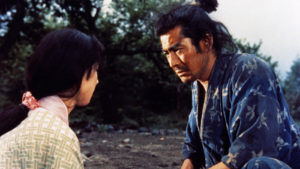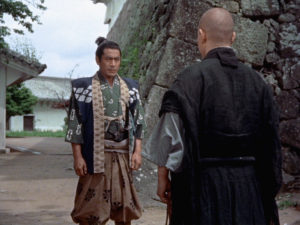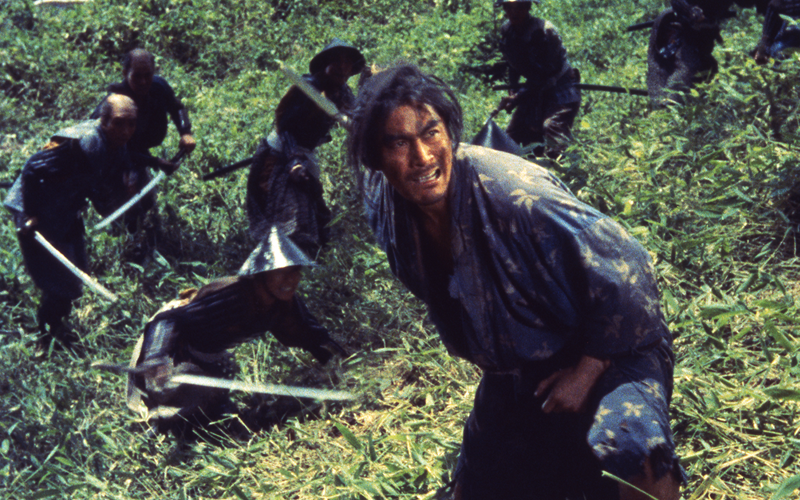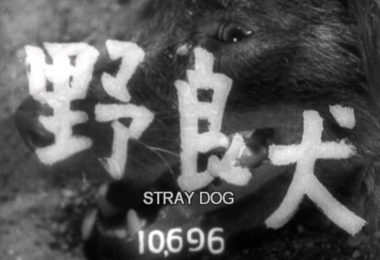Hiroshi Inagaki’s 1954 Film, Musashi Miyamoto, is a Story of Redemption and Personal Triumph
This week I take a look at the 1954 epic from Hiroshi Inagaki, Samurai 1: Musashi Miyamoto, starring the powerful and dynamic, Toshiro Mifune.
Released in Japan in 1954 and America the following year, this film is the first in a trilogy loosely depicting the life of Shinmen Takezō, more popularly known as the legendary samurai, Miyamoto Musashi. Musashi is a popular figure in Japanese history and is famously known as one of the greatest swordsmen to have ever lived.
Our story follows Takezō, played by Mifune, and his friend Matahachi. Takezō is disowned and estranged from his family but dreams of glory and fame in the great wars so that he might return home a respected Samurai. With this dream guiding him, he decides to join the armies along with his friend Matahachi.

Samurai 1: Musashi Miyamoto
Unlike Takezō, Matahachi has it all; respect from his family and a beautiful wife to be named Otsu. Despite this, Matahachi goes along with Takezō’s plans. Unfortunately for the pair, they pick the wrong side of the war to be on and eventually become fugitives.
Eventually, Takezō is captured by a Buddhist priest where the young warrior must endure a series of emotional and mental tribulations. Takezō is pushed to the edge as he is relentlessly hunted by his own family, tied up and hung from a tree for what seems like weeks on end (how he doesn’t die of starvation is beyond me) and repeatedly tricked by the cunning priest.
Regardless of all the bad luck Takezō endures, everything eventually manages to work out for him in the end. All the lies, beatings and general mistreatment Takezō goes through are really only meant to reinforce that despite being a wild-dog, Takezō has all of the makings of a great man and honorable Samurai.

Samurai 1: Musashi Miyamoto
This film is a cinematic masterpiece. In terms of production and technical direction, Inagaki is able to pull you into feudal Japan with relative ease. Everything feels big and large-scale, but Inagaki manages to maintain a feeling of intimacy from start to finish. Ensuring that the set pieces are there only to support the very personal story unfolding before us, Toshiro Mifune is able to portray the character of Takezō, with conviction and intelligence. From savage brute to calm, collected, and poetic, his on-screen transition seemingly happens almost real-time. You really feel for the character and root for him along the way.
This first installment sets up an almost endless list of side plots upon side plots that could only be fully fleshed out across several films. Like most period piece swordplay films from the 50s, it’s a drama first, so don’t expect the fast-paced action ála Congo. It’s a slow-burn, but the pacing and editing are on-point enough to never feel dull. Even during the slower moments of the film, these parts are so frontloaded with engaging philosophical questions and character depth, that the film never feels bogged down.
There’s so much I’m leaving out, but hopefully, there’s enough here to encourage you to discover the film for yourself. While the fun swordplay scenes tend to be more prominent in the next two installments, this movie presents a great story and character to care about.
Check it out!
Rating 4.5 out of 5



I get that it isn’t action oriented but I’m curious to know how spread out the action is. Is it saved for the second half of the movie or is it subtly spread out into smaller occasional sequences across the film? I don’t mind slow burn movies but i do hate the idea of saving all of the violence and/or action for the end. In any instance for that matter. Like dinner with no drink. You start to get thirsty. Will i have to expect super slow pace or just slow?